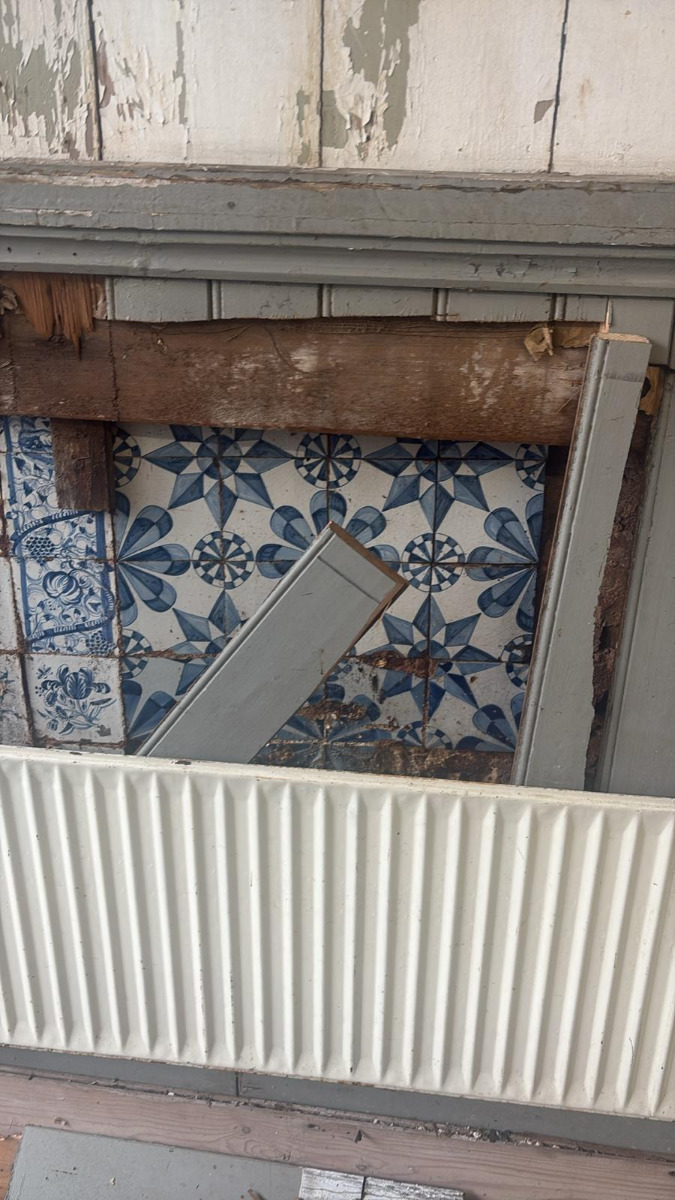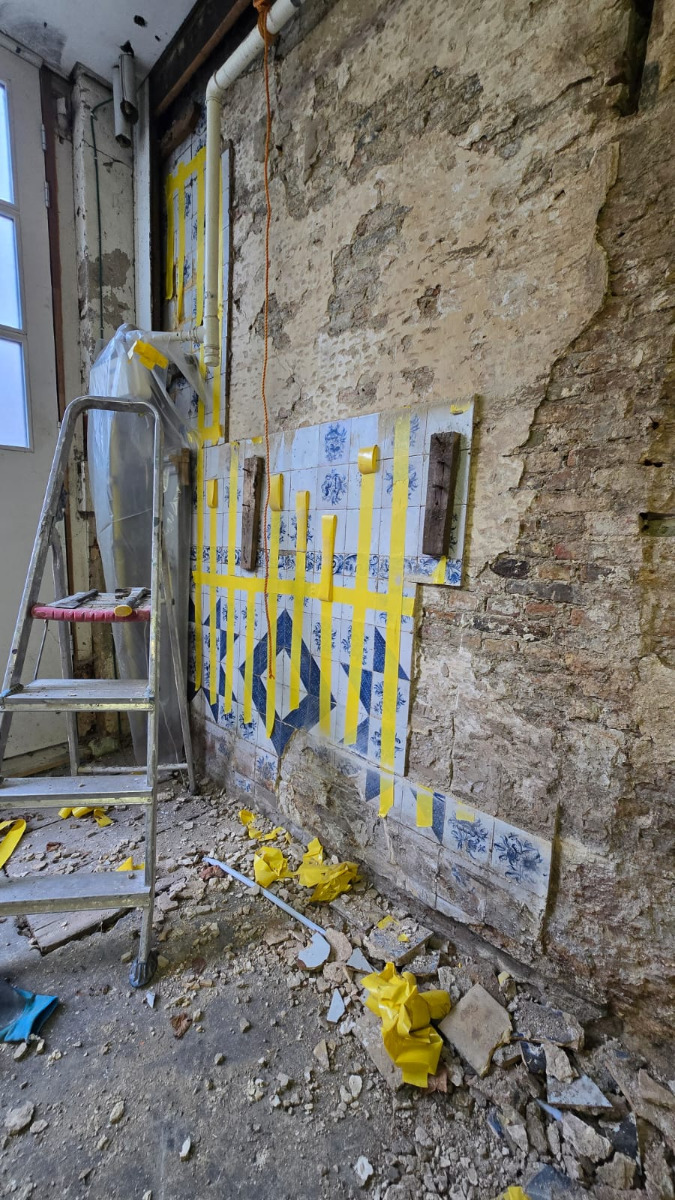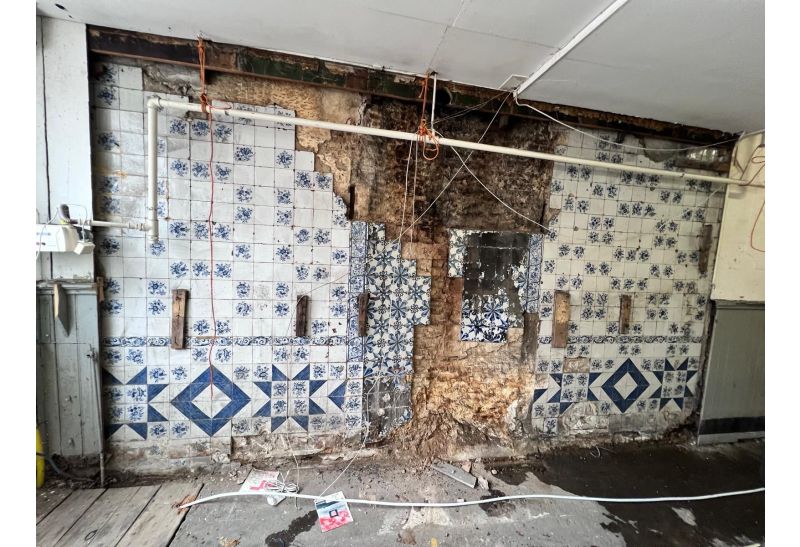It began with a phone call a few months ago. Behind a wooden panelling in a house in a Frisian city, a hidden wall of tiles had been discovered. The owner wanted to know whether the tiles were genuine Delft tiles - and if so, what could be done with them.
“When I arrived and saw the first few uncovered tiles,” recalls Durk Regts of Regts – Delft Tiles, “it was immediately clear that they were late 18th- or early 19th-century Frisian tiles - blue and white, classic in every sense.”
A hidden wall revealed
The discovery took place in what was, until recently, a garage. The space was part of a larger historic house undergoing renovation, and as the wooden cladding was removed, the first signs of blue-and-white tiles appeared.
At first, it was difficult to judge the extent of the tiling. Only a few tiles were visible, and parts of the wall seemed in poor condition. But as more planks were removed, it became clear that the tiles stretched across the full width of the wall.
“The owner thought the wall was severely damaged,” says Durk. “But as I looked closer, I noticed a recess — the remains of an old fireplace. That explained everything. We were looking at the former living room, not a garage at all.”

A fireplace from the past
Once the panelling was completely removed, the full picture emerged: a wall beautifully tiled from floor to ceiling, once framing a large fireplace. On both sides, tiled lambrisering (dado panels) decorated with Frisian star motifs and large flower tiles; above them, scattered floral patterns filling the upper wall.
This was not just a tiled wall - it was a complete interior feature from around 1780–1820, remarkably preserved beneath layers of timber and dust.
“It’s an extraordinary find,” Durk explains. “Original installations like this are extremely rare. You can still see the soot traces around the former fireplace opening. The tiles closest to the fire absorbed the smoke, so cleaning them requires great care - not just surface cleaning, but deep soaking to remove the soot that has penetrated the clay body.”
A closer look at the tiles
The installation combines several distinct Frisian motifs:
- Star patterns, each requiring sixteen tiles to form a complete decorative unit;
- Large floral tiles, characteristic of Frisian craftsmanship from the late 18th century;
- Half-tiles arranged diagonally — an unexpectedly modern, almost contemporary layout;
- And two incomplete pilaster tiles, painted with birds and garlands, suggesting earlier reuse.
“What struck me most,” says Durk, “was the creative use of half-tiles placed diagonally between the stars - a layout that feels modern even today, yet dates back more than two centuries.”
Preserving what can be saved
Unfortunately, not all tiles survived. Moisture had weakened parts of the wall, causing some sections to crumble. The wooden panels that once covered the wall had also been nailed directly through several tiles. Still, many could be carefully removed.
The removal was carried out by Arno van Sabben, a specialist who works partly by hand when tiles are loose, and by precision cutting when they are still firmly attached due to moisture suction. Within a single day, the entire wall was safely dismantled.
“For us, these discoveries are both educational and inspiring,” Durk notes. “They show how Delft tiles were used in domestic interiors, and they remind us how much craftsmanship went into these historic homes.”
Today, the tiles are stored at Regts – Delft Tiles, awaiting cleaning and restoration. Though they can no longer remain in their original wall due to structural decay, they have been preserved for the future - ready to find a new place where their story can continue.

A rare glimpse into Frisian tile history
Finds like this are becoming increasingly uncommon. To uncover a complete 18th-century Delft tile installation, still largely intact and in situ, is exceptional. It offers a direct link to the period when Frisian craftsmen painted and fired these tiles by hand - each one slightly unique, together forming a vivid reflection of everyday beauty.
“It’s a reminder,” concludes Durk Regts, “that beneath the surfaces of old houses, history still waits to be found — sometimes quite literally.”

 10 out of 10
10 out of 10





